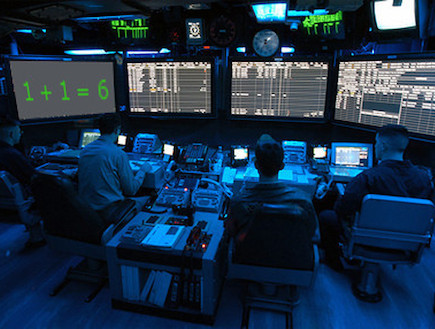Inside the Unit that Connects the IDF
The IDF’s Hoshen Unit is building an expansive IDF network. Its soldiers enable IDF units to master the battlefield and collaborate against threats.
Just over two months ago, an IDF naval team ventured thousands of kilometers from Israel to intercept an Iranian weapons shipment at sea. After boarding the KLOS-C cargo vessel, the forces seized long-range rockets ans other weapons destined for Gaza terrorists. The operation never would have succeeded without the Hoshen Unit, which provided first-rate communication between fighters at sea and IDF forces in Israel.
![]()

Hoshen connects thousands of IDF soldiers through digital communications and other cutting-edge media. The unit consists of three battalions that manage communications for the entire IDF, whether by land, air or sea. Its soldiers also help IDF Intelligence communicate with Israel’s key security agencies.
“A technological revolution”
The IDF’s day-to-day functioning depends on Hoshen’s work, and the unit has taken on essential responsibilities with the recent digitization of the battlefield. In 2013, the Israeli military completed the process of digitizing the Ground Forces and established control systems that provide instant visuals of the IDF’s forces and the enemy. Today, the entire IDF is interconnected, from command centers to soldiers on the ground.
![]()

“Israel’s technological revolution in the civilian sphere has expanded to the military world,” says Lt. Col. Maman, referring to the innovative spirit that defines Israel in the 21st century. “Today, there isn’t a military drill or training exercise that takes place without the technologies that ensure communication within the IDF.”
Winning the battle
The Hoshen unit’s work is critical to operations during a time of crisis or emergency. “The unit is operational constantly, 24/7 according to the needs of the IDF,” says Lt. Col. Omer Cohen, the commander of a battalion specializing in satellite communications. “Every battalion is on alert the moment the IDF starts to mobilize, whether it’s in the north, south or centre of the country.”


Thanks to Hoshen’s tools and skills, military leaders receive a complete picture of situations on the ground. “We allow [commanders] to make the right decisions at the right time,” explains Lt. Col. Itzhak, who oversees communication between the IDF’s General Staff and government institutions. “We’ve become the key enabler for decision making in the Israeli military.”
The unit’s technology also enables soldiers to maneuver and dominate the battlefield. “Our equipment gives us a more options for strategy when planning an operation,” Lt. Col. Itzhak adds. “Our communication is no longer limited by tools like cell phones, computers and radios.”
Cyber defense
Hoshen works alongside other IDF units to protect Israel against cyber attacks. “In this war, we must be innovative, as the enemy can always find a way to bypass the protections we put in place,” says Lt. Col. Cohen.


Cyber defense in the IDF
The unit’s works is part of Israel’s extensive cyber-defende efforts. In 2011, the IDF created an official division for cyber defense, including a desk that operates 24/7 in order to counter cyber threats. Officers from the Cyber Defense Division are present in every place in the army and are ready to meet all the challenges of tomorrow’s war.
“All the means of technology are at the disposal of our soldiers and no operation can take place without our involvement,” Lt. Col. Cohen concludes. “Our slogan has always defined our mission: ‘wherever we want, by all the means we have, by land, air and at sea.’”

